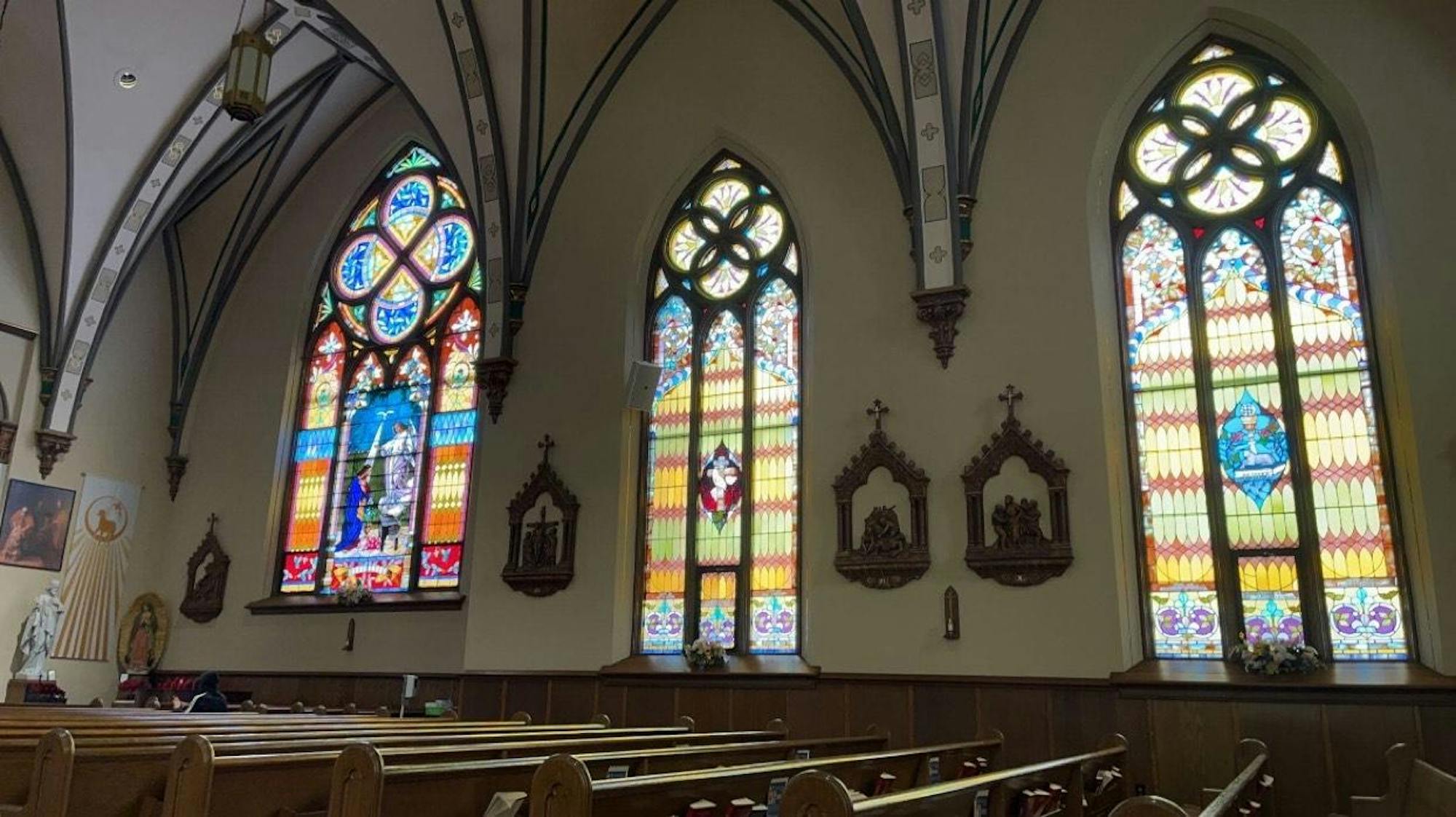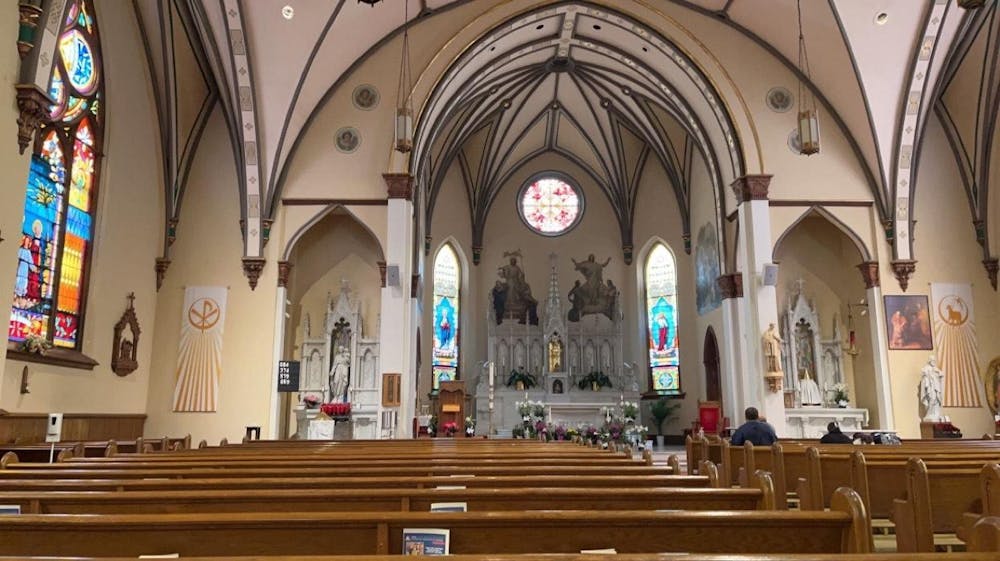Esmeralda Sánchez knew something wasn’t right in Muncie, Indiana.
As a first-generation Mexican-American living in Indianapolis from age 2 to 29, Sánchez had become used to a location with a vibrant and lively culture. In the downtown area of the capital city, Sánchez said there were multiple churches offering Spanish services, as well as taquerías, or taco shops, among other things. For her, seeing resources like these showed her there was an active community around her, something she said one Mexican restaurant can’t do.
“Having that variation is important. For Hispanics, a taquería is completely different from a Mexican restaurant,” Sánchez said. “In order to have something like a taquería in your area, you need to have Hispanics. You need people who truly understand the food.”
However, following her husband’s fall from a 30-foot ladder at work, what she had always known would soon change as she faced new challenges. The first of those was entering the workforce.
“At that time I was really being at home with our son,” she said. “[The fall] really shook up the whole entire family structure that we had at that moment.”
While the family had savings, there wasn’t enough money to cover the bills on top of paying for her husband’s physical therapy to heal from his accident. So Sánchez accepted a leadership position with the Archdiocese of Indianapolis, where she worked for two years, as the coordinator of Hispanic ministry, within the Office of Intercultural Ministry. Her responsibilities included interacting with various communities of faith, and offering retreats and “spiritual growth opportunities to bring them closer to God,” she described.
Still, Sanchez said a lack of opportunities for those in leadership to grow in their faith, led her to move on from the job into something different.
“What I realized was I wanted to be fed spiritually as well, especially with this hard phase in our family and in our life,” Sánchez said.
She needed a plan. At the same time as her husband’s accident, the family decided to sell their home.
“I told my husband, ‘I’m just going to look for our perfect path, and wherever that takes us, we’ll go there,’” she said.
This decision was made in late 2020, which according to a 2022 study was at the height of COVID-19 hospitalization rates for all age groups in the United States. The family thought the house may spend more time on the market due to these pandemic conditions, but data from the Federal Reserve System found that the amount of homes for sale fell drastically during that portion of the pandemic. This caused houses placed on the market to sell more quickly due to a higher demand.
The Sánchez house was no different.
“Within days, we were under contract, and we had no place to go,” she said.
A rural return
She thought it would be “more like a rundown city.”
Though Sánchez attended Ball State 10 years ago, she said Muncie was much different now compared to her time in college.
“When we would go down McGalliard [Road,] all the buildings were very small, very old, not very taken care of,” she said, “but when we came back to look at our house two years ago, and we went down McGalliard Road, it was 180 degrees difference. It was completely lively, new buildings, new construction, limitless with life, and we fell in love with that.”
Another new aspect of Muncie that she was drawn to was the Sunday service offered in Spanish at St. Lawrence Church. This weekly event at the building located at the corner of Charles Street and Hackley Street was introduced in 2018, according to the Rev. Christian DeCarlo, a priest at the church.
DeCarlo was brought to the church in August 2020 to serve Muncie’s Hispanic community. Prior to this, he spent time in Carmel, Indiana, where he worked with a Peruvian parishioner with whom he practiced Spanish. Before this, his last interactions with Spanish would’ve been in high school.
“It was just a trial by fire. I learned as I went, and I did the best that I could,” he said.

He slowly picked up the language, saying that after a four-week trip to Lima, Peru, he was able to do his prayers in Spanish without reading them. These “traditionally Catholic” Spanish-language masses including readings from scripture, hymns and prayer are especially important for people like Sánchez, who said her faith was linked to Spanish in a way English speakers may not understand, making her relate to it more in the language.
“It wasn’t until I was in my mid 20s that I learned my prayers in English, so I just felt that being Catholic in the English language was completely different than in Mexican culture — in my culture,” she explained. “I feel that we live through our faith in the Hispanic community. We celebrate nearly all of our traditions based on the Catholic faith, whether we realize it or not, whereas in the English community, I feel that coming to mass is a priority, but the traditions in the culture don't always live off the faith.”
According to a 2022 report by the Pew Research Center, 43% of Latino/Hispanic adults in the United States identify as Catholic, down from 67% in 2010. Still, Latinos remain twice as likely as U.S. adults overall to identify themselves as Catholic
Despite the strong connection and excitement she had for her faith, Sánchez was “shocked” when she attended a service in Muncie for the first time.
From eight to 80
She suspected it may have been because of the pandemic.
Having only her time in Indianapolis to compare it to, she just couldn’t understand why the Sunday Spanish service at St. Lawrence had “five to eight” people in attendance.
“I automatically went, ‘Something is not adding up.’ I know my people, and I know my community,” she said. “We kept going, and I just kept waiting for the day we would see a full mass.”
When that time didn’t come early on, she decided to apply for a position at the church to help make it happen. She was hired soon after as the coordinator of religious education and sacramental preparation. After meeting with the leadership team following the three parishes in Muncie becoming one pastorate, Sánchez said she saw a “clean slate” to bring new people in.
“We looked at numbers, and we saw there are around 2000 [people of Hispanic/Latino origin] here in Muncie. We asked, ‘Where are they?’” she said. “I gave myself the homework to go out and try to find these people.”
According to data from the Pew Research Center, those of Latino/Hispanic origin make up around 15% of those in Indiana who identify as Catholic.
Within a few months of searching, Sunday attendance grew to around 30 people. Before long, that number grew to 50.
Then it stopped.
“It was just like we couldn’t grow from that number, and I don’t really know what happened,” Sánchez said.
DeCarlo said the church promotes the services using things like fliers in popular spots around Muncie, as well as word of mouth. Still, he said the Latino/Hispanic leadership in the church around him are his greatest support system in the process, and it was essential they were included.
“We have some very strong, committed members that have really invested, and I recognize I can’t do this on my own,” he said. “It’s important to include everybody, because this community belongs to them, too.”
This pause came to an end as Easter approached; attendance grew to somewhere between 70 and 80 people. However, when the holiday came, St. Lawrence welcomed nearly 175 people in their doors for the Spanish mass. Currently, the church is back down to around 80 weekly attendees, giving Sánchez her next project: retention.
“It’s looking bright for us,” she said. “We know they’re out there. Now we have to find the correct tactic to bring them back in.”
‘We feel at home’
Sánchez said the growing Hispanic population in Muncie, as well as in the nation as a whole, makes the weekly Spanish service so valuable. She said it is important to be ready to receive and support new people as they come.
“When we as Latinos feel like we’re being recognized and accepted into a community, we feel at home. We want to bring more people here to support it,” she said, mentioning how her mother and her sister have followed her family to Muncie since her and her husband’s move.
In addition to this, she said having resources like the 3 Hermanos Supermarket, in addition to the Sunday services, could ultimately lead to increased numbers of Latino/Hispanic homeownership in the area.
“In Indianapolis, we saw this a lot that the Hispanic community bought a lot of abandoned homes, they fixed them up and the area grew,” Sánchez said. “If we can correlate what we are seeing here to Indianapolis, I think it just means more continued growth [for Muncie.]”
According to 2019 data from the U.S. Census Bureau, those of Hispanic origin owned just 1% of homes within Delaware County, compared to the 94% of homes owned by whites. However, these numbers are rising. The 2022 State of Hispanic Homeownership Report from the National Association of Hispanic Real Estate Professionals found that the rate of homeownership among Latinos increased to 48.6% last year, making eight years of consistent growth for the population.
Both Sánchez and DeCarlo are focused on continuing to build up mass attendance going forward. They welcome everyone to attend.
“It’s a good combination of honoring your heritage, whatever Hispanic country you come from, and just being connected through your traditions,” DeCarlo said. “It’s a place where people can find a home and know they’re always welcome, and it’s a place to find peace in the midst of the challenges that come in life to just know that God is there waiting for you.”


